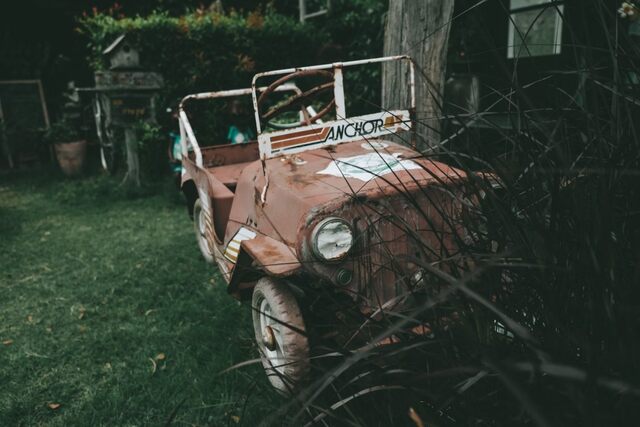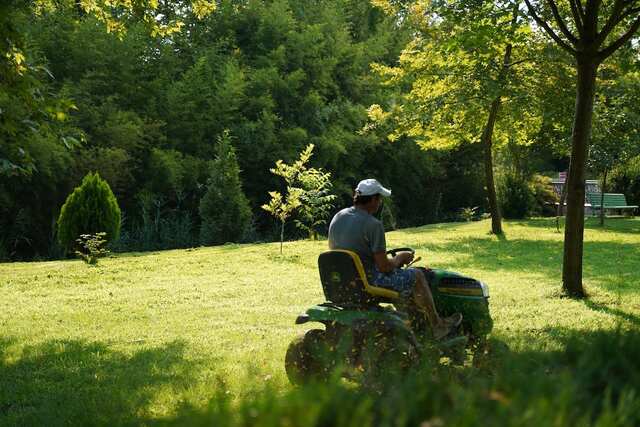Cars can bring convenience to our lives, but they can also unintentionally wreak havoc on our lawns. If parked or driven on grass regularly, vehicles can cause significant damage to the turf – leading to unsightly ruts and compacted soil that can hinder grass growth. Fortunately, there are proven steps you can take to prevent this damage and maintain the health and aesthetic appeal of your lawn.
This guide will provide an in-depth exploration of six effective measures to safeguard your yard from car-induced wear and tear. Understanding and implementing these strategies will help ensure that your lawn remains a vibrant and inviting outdoor space.
1. Install Protective Barriers
Physical barriers such as fences, bollards, or decorative rocks can deter vehicles from encroaching upon your lawn. This protective measure is particularly helpful if you have a wide driveway or live in an area with heavy traffic. These barriers serve as visual cues, reminding drivers to stay on designated pathways and away from the grass. For added protection, consider installing low-impact barriers that can absorb the weight of vehicles without causing damage. However, adding protective barriers comes with a cost.
To be precise, around $1,000 to $2,500 for a typical 150-foot-long driveway. So, budgeting and thinking about the financing options is crucial before investing. Whether you choose to get cash for junk cars or save up for the installation, make sure to weigh your options and determine the best course of action for your lawn and budget. Finally, make sure to regularly inspect and maintain these barriers to ensure they remain effective in protecting your lawn.
2. Create a Designated Parking Area

Establish a specific spot for parking cars and instruct all household members and guests to use it. Using materials like gravel, asphalt, or concrete can prevent damage to the grass. These hard surfaces distribute the weight of vehicles evenly, reducing the likelihood of ruts and soil compaction. In addition, designating a parking area will also help keep your lawn looking neat and tidy.
Plus, it can save you time and money on repairs and maintenance in the long run. On average, homeowners spend around $600 to repair a single rut caused by vehicle damage. By designating a parking area, you can avoid these expensive repairs and protect your lawn from further stress. For added protection, you can also consider installing plastic or rubber parking pads that create a barrier between the tires and grass.
3. Use Permeable Paving Solutions
Consider using permeable paving materials, such as permeable concrete or grass pavers. These allow for proper drainage and air circulation, which can help protect your lawn’s health and integrity. These solutions come at a higher cost than traditional paving materials, but they offer long-term benefits that can save you money in the future. Permeable paving not only prevents damage to your lawn but also helps prevent soil erosion and runoff pollution. When installed correctly, permeable paving can also increase the aesthetic appeal of your outdoor space.
Moreover, these materials can withstand heavy traffic and are environmentally friendly options to consider for your lawn. For example, pervious concrete can cost around $4 to $15 per square foot, depending on the location and design complexity.
4. Apply Lawn Reinforcement Mesh
This is a durable, plastic mesh that can be installed over the lawn to protect the grass from damage and compaction caused by vehicles. The mesh is permeable, allowing for proper air and water circulation while providing stability to the grassroots. Installing lawn reinforcement mesh can also prevent muddy spots on your lawn, which can be a nuisance during rainy seasons. These meshes are available in various sizes and designs and can easily blend with the surrounding landscape. They are relatively affordable, making them a cost-effective solution for safeguarding your lawn.
On average, homeowners can expect to spend around $250 to $500 for a typical 50-foot-long driveway. Out of these $500, the majority of the cost goes towards materials, while installation labor costs are minimal.
5. Maintain Regular Lawn Care Practices

Regular mowing, watering, and fertilizing can strengthen your lawn and make it more resistant to damage. Mowing the grass to the recommended height can promote healthy root growth and reduce soil compaction. Proper watering, especially during droughts, can also help maintain a thick and lush lawn. Fertilization provides essential nutrients to the grass, making it more resilient against vehicle damage and other external stressors. Additionally, aerating your lawn at least once a year can alleviate soil compaction, allowing for proper air and water circulation.
By incorporating these routine lawn care practices, you can maintain a healthy and robust lawn that is better equipped to handle vehicle-induced damage. When you notice any signs of damage, take immediate action to prevent further harm. More importantly, always stay informed about the recommended lawn care practices for your specific region and grass type.
6. Educate About Lawn Care
Make sure everyone in the household understands the importance of lawn care and the potential damage that cars can cause to the grass. This can encourage more responsible behavior around the yard. Take the time to educate your family and guests about proper lawn care practices, such as staying on designated pathways and avoiding driving on the grass. Explain the potential consequences of neglecting these measures, such as costly repairs or a damaged outdoor space. By educating those around you, you can create a more mindful and respectful environment that promotes the health and beauty of your lawn. Lawn care is a process that is composed of various steps, and each one plays a crucial role in safeguarding your outdoor space. The most important parts of the process are planning, budgeting, and regular maintenance. Most importantly, lawn care is a continuous learning experience, and by staying informed and making informed decisions, you can successfully prevent car damage to your lawn.
All in all, protecting your lawn from car damage requires a combination of planning, budgeting, and regular maintenance. By implementing designated parking areas, using permeable paving solutions, applying lawn reinforcement mesh, practicing regular lawn care habits, and educating those around you about the importance of lawn care, you can successfully prevent costly damage to your outdoor space. Remember to always stay informed and be proactive in identifying and addressing potential issues to keep your lawn healthy and beautiful for years to come. Your efforts will not only benefit the health of your lawn but also contribute towards creating a more sustainable and environmentally friendly outdoor space.

